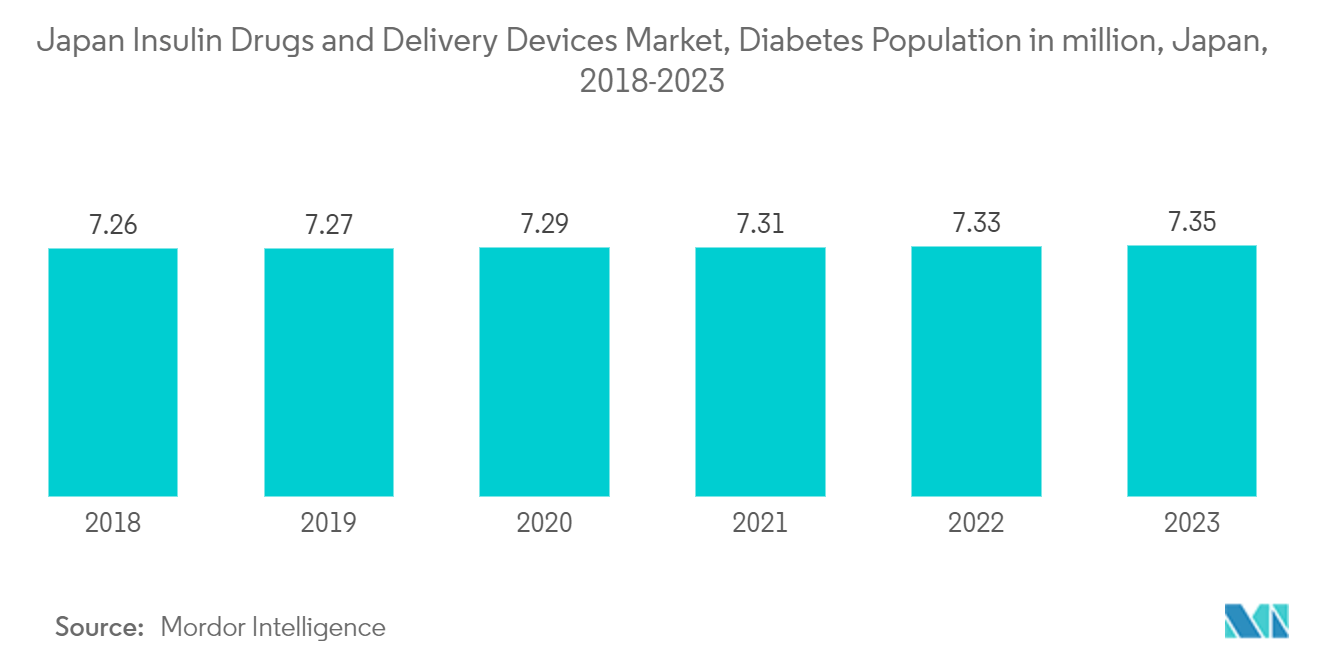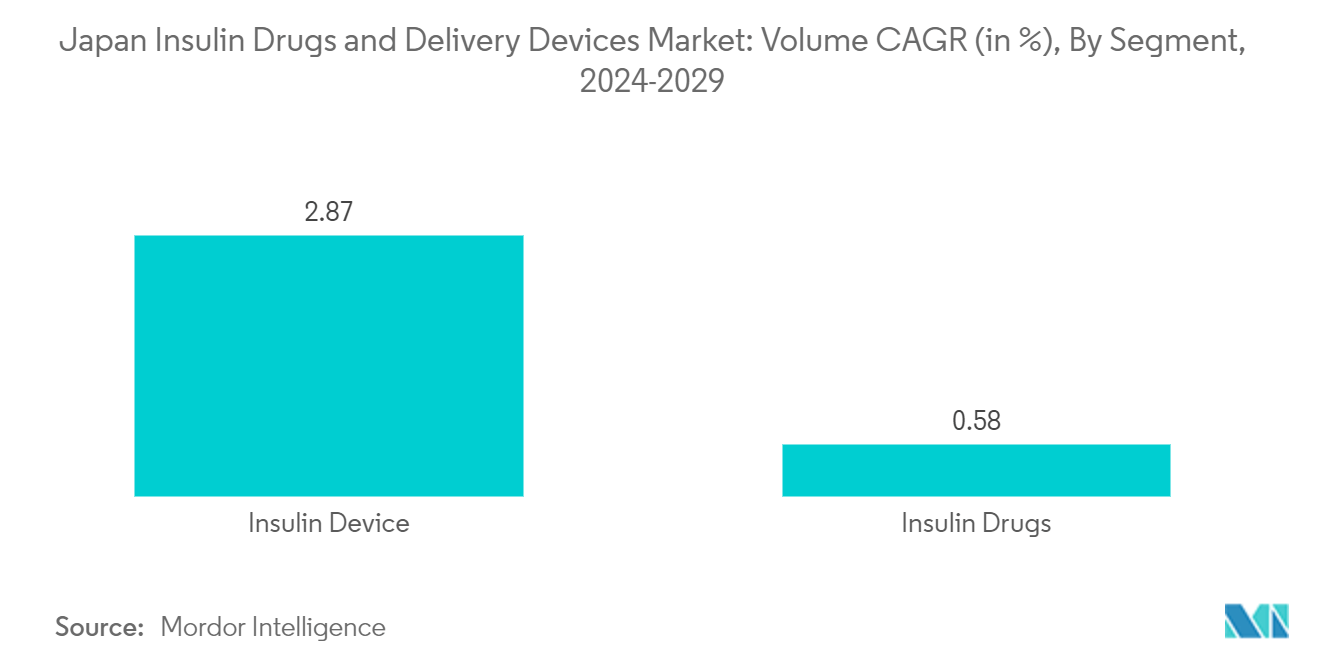Market Trends of Japan Insulin Drugs And Delivery Devices Industry
Growing Diabetes and Obesity Population in Japan
Diabetes cases are thought to be increasing in Japan due to an increase in the number of older adults, who are more vulnerable to disease, as well as an increase in obesity due to a lack of exercise and irregular eating habits. While an immune system malfunction causes Type 1 diabetes, Type 2 diabetes is associated with a sedentary lifestyle, leading to inherent insulin resistance. As a result, Type 1 diabetes can be classified as insulin-requiring, whereas Type 2 diabetes can be classified as insulin-dependent. Japan has one of the world's largest elderly populations, making it more vulnerable to the onset of type 2 diabetes.
Diabetes is becoming more common in Japan as the country's population ages. Insulin devices encompass a range of tools and technologies designed to deliver insulin effectively and conveniently to patients.
Insulin pens and syringes are commonly used for manual insulin injections, while insulin pumps deliver insulin continuously through a small catheter placed under the skin. CGM systems, on the other hand, continuously monitor glucose levels in the interstitial fluid, providing real-time data to help patients manage their diabetes more effectively. Overall, insulin drugs and devices play a crucial role in diabetes management, helping patients maintain optimal blood sugar control and minimize the risk of complications associated with the condition.
Because of the factors above, the market is expected to expand further.

The Insulin Pumps Segment is Expected to Witness Highest Growth Rate Over the Forecast Period
Insulin is delivered subcutaneously via a cannula attached to a patch. When the pump is used independently of the AID system, a remote control can adjust administration settings such as basal and bolus.
A predictive low-glucose management (PLGM) insulin pump was introduced in Japan. The sensor automatically suspends insulin delivery when it detects or predicts low glucose levels. The number of insulin pump users among Japanese patients with type 1 diabetes mellitus is estimated to be around 10,000, implying that the insulin pump has not yet permeated Japan.
Diabetes has been identified as a healthcare priority by the Ministry of Health, Labour, and Welfare (MHLW). The high prevalence of type 2 diabetes is associated with a significant economic burden. The costs of diabetes are increased in patients with co-morbidities such as hypertension and hyperlipidemia and in patients who develop complications. Costs increase with an increasing number of complications. Well-organized medical insurance systems cover all medical fees for diabetes mellitus, and people with diabetes can visit doctors freely in Japan. Also, insulin therapy by self-injection became legal and is covered by health insurance. Such advantages have helped the adoption of these products in the Japanese market.


